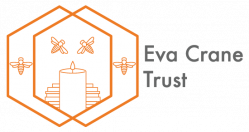Supporting Bee Research
Supporting Bee Research
In 2015 the Trustees were interested to hear about the research being undertaken by Mark Greco and colleagues at Charles Sturt University, Australia. They have recently decided to award a grant to Dr Greco to support his research over the next two years. This is a summary by Dr Greco about his project.
Project Title:
The effects of pathogens on brain and behaviour in bees
Summary
Approximately one third of our diet comes from food that relies on pollination by bees. During pollination, bees accumulate pollutants (Johnson et al. 2009; Mullin et al. 2010; Yang et al. 2012; Derecka et al. 2013; Pettis et al. 2013). They are now chronically exposed to a cocktail of different pollutants and pathogens that subtly interact with detrimental effects on survival, learning, and navigation behaviours (Johnson et al. 2009; Johnson et al. 2010; Cresswell 2012; Gill et al. 2012; Henry et al. 2012; Krupke et al. 2012; Greco et al. 2013; Vanbergen & Greco et al. 2013).
Research has shown that many pathogens affect honeybee health; however there is still much that we do not know on how these pathogens are spread from one honeybee to another, one hive to another or one apiary to another. The presence and spread of pathogens in honeybee colonies has traditionally been assessed using crude invasive manual methods such as opening the hive and visually inspecting colonies for signs of disease.
This research will develop a more powerful, accurate and non-invasive method for diagnosing pathogen dispersal within honeybee colonies. A tracking system, using X-ray Computerised Tomography (CT), will be developed to show how and when honeybees pass food from one bee to another within the hive. Human body CT scanners will be used to visualise the inside of honeybee hives. The food will be labelled and will contain pathogen so that the 3-D X-ray imaging produced by the CT scanning can track how and when the pathogen is spread within the hive. The method will also be valuable for other insect pollinators such as bumble bees, solitary bees, ants, wasps and also for the commercially important species of termites.
In honeybees, the queen bee mates with up to twenty different males before she starts laying her worker bee brood. This project will also aim to describe, by using a novel infection model, how worker honeybees from different fathers interact when they feed each other and when they store food. The worker honeybees raised from different father groups will then be given food containing antibiotic resistant pathogens so that we can calculate which bees receive the pathogen, when the bees pass the pathogen to another bee and how much pathogen is passed on. This information will tell us whether honeybees are more likely to spread pathogens to bees that are more closely related to them or whether they spread pathogens indiscriminately within the hive.
The research will examine the consequences of:
a) honeybees passing food to more or less closely related individuals,
b) the level of preferential feeding that occurs within a hive and
c) the proportion of pathogen that is transferred from one honeybee to another during feeding.
This project is significant because it will improve our understanding on how bees respond when compromised by pathogens and how behaviours are affected by environmental pressures.
Dr Mark K Greco F.R.E.S. PhD Biology UWS (AUS) | PhD Engineering UoB (UK)
http://www.radioentomology.com/research.html
